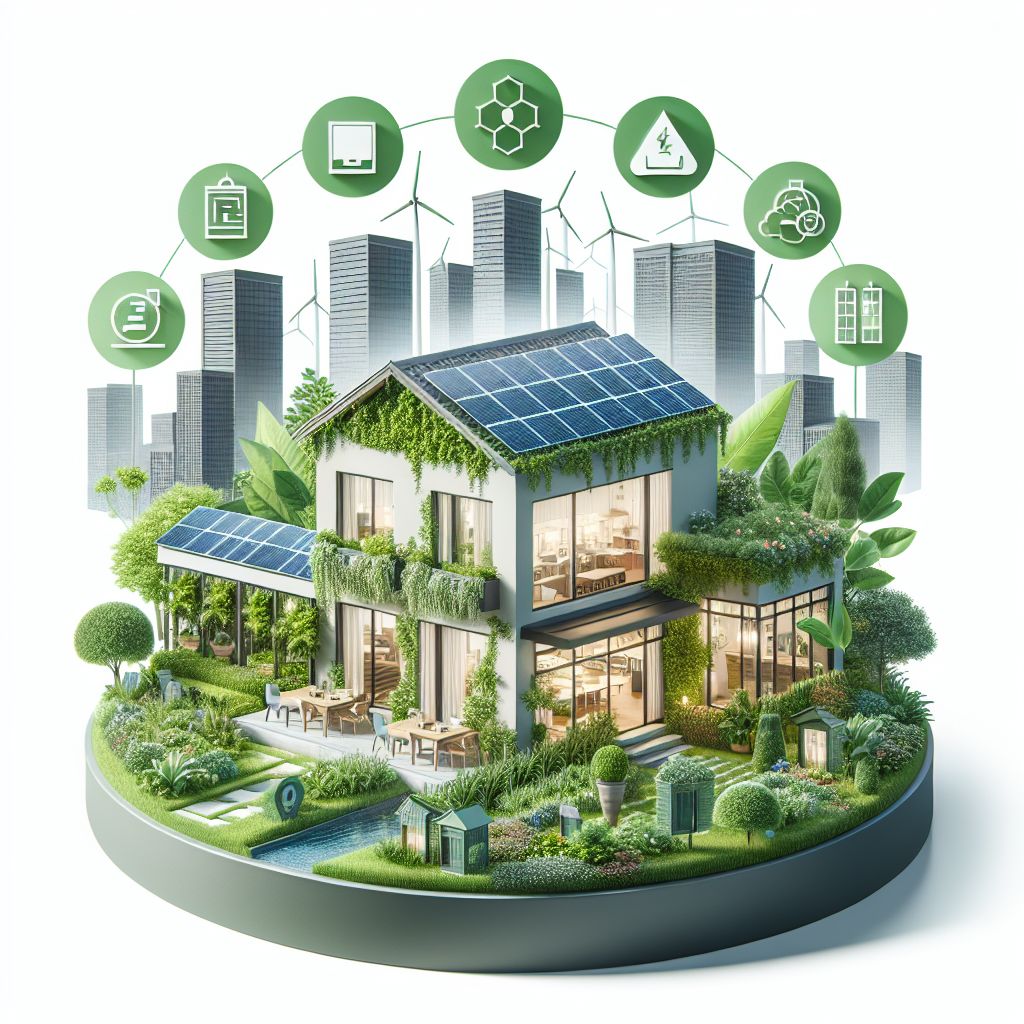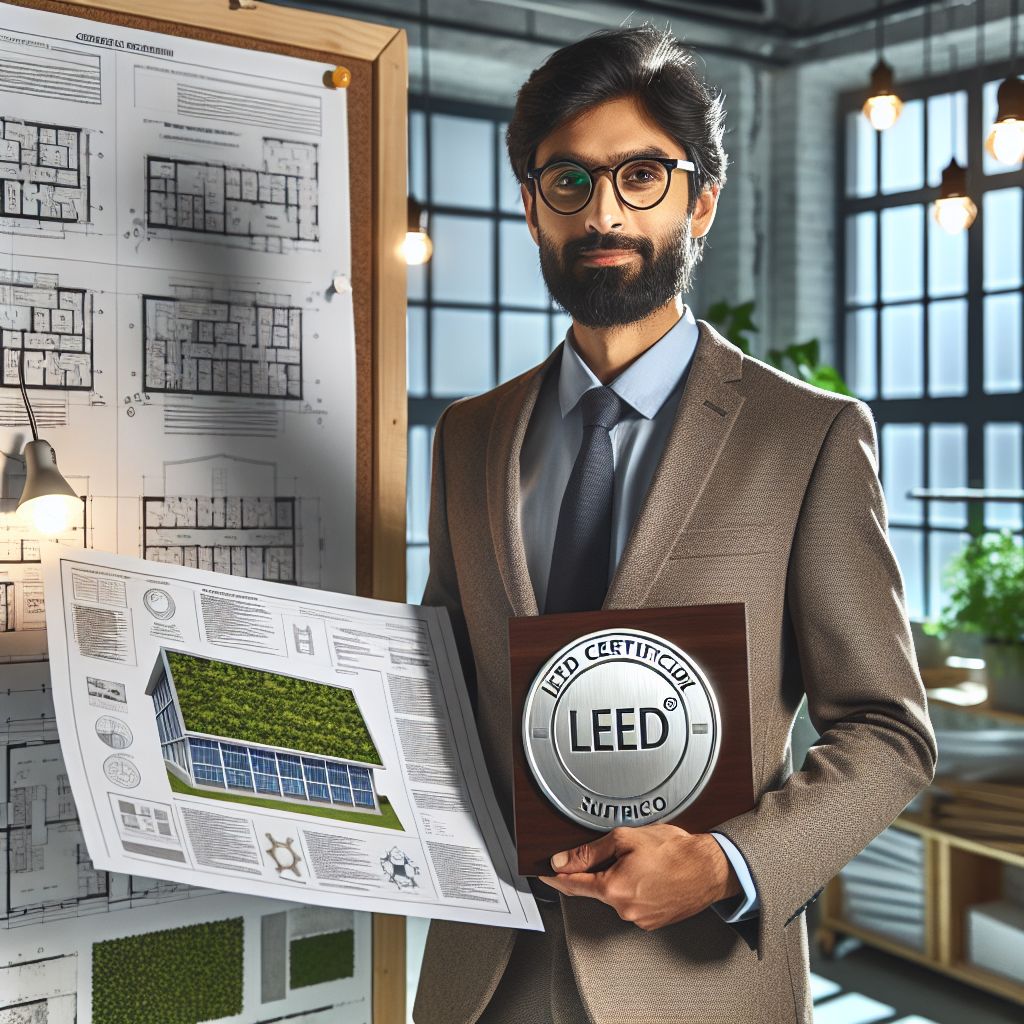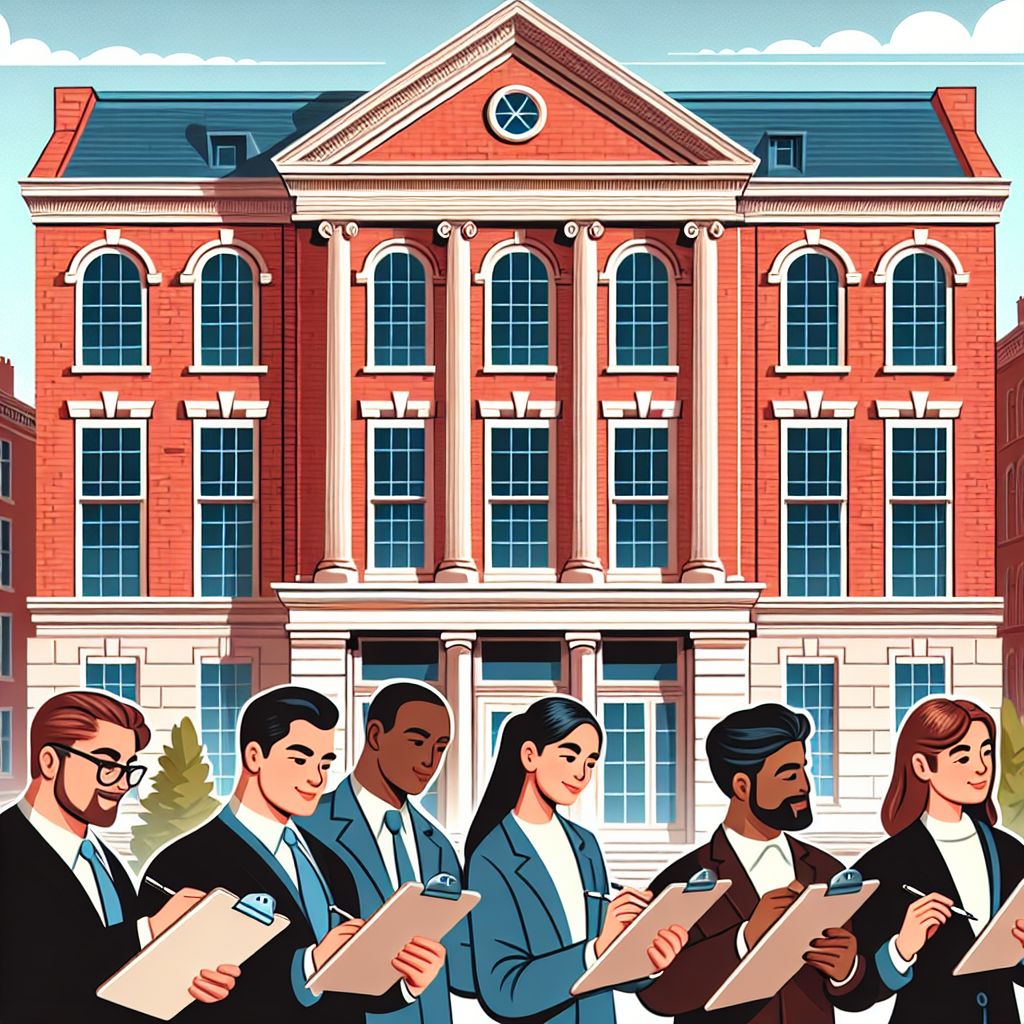Key Takeaways
-
LEED certification is crucial for sustainable architecture, promoting energy efficiency and environmental responsibility.
-
There are various levels of LEED certification, each offering different benefits and recognitions for eco-friendly design.
-
Sustainable design incorporates energy-saving technologies and materials that reduce environmental impact and improve building performance.
-
LEED-certified buildings can offer significant long-term financial savings through reduced utility costs and increased property values.
-
Adopting LEED principles in architectural projects not only benefits the environment but also enhances the well-being of occupants.

The Power of LEED: Benefits in Sustainable Architecture
When we talk about the future of our planet, every action counts, and this is especially true in the world of architecture. Sustainable architecture isn’t just a trend; it’s a commitment to the Earth’s future and the well-being of its inhabitants. That’s why LEED certification is more than a badge—it’s a roadmap for building a world that’s greener, healthier, and more efficient.
Why LEED Certification Matters for Eco-Friendly Design
Think of LEED certification as a compass for eco-friendly design. It guides architects, builders, and owners through the process of creating spaces that work in harmony with the environment. By following LEED standards, we ensure that buildings consume less water, save energy, reduce greenhouse gas emissions, and offer healthier indoor spaces for people to live, work, and play.
Understanding the Levels of LEED Certification
LEED certification comes in four levels: Certified, Silver, Gold, and Platinum. Each level reflects the extent to which a building meets certain sustainability criteria. To achieve these certifications, a project must earn points across several categories, including energy use, water efficiency, indoor environmental quality, and material use. The more points a building earns, the higher its certification level.
Green Building Essentials
At the heart of green building are the core components of sustainable design. These are the nuts and bolts that make a building energy-efficient and environmentally friendly. They include:
Core Components of Sustainable Design
First, consider the building’s location and how it fits within its environment. Then, focus on water conservation by using fixtures that reduce water usage. Energy efficiency is next, with the use of LED lighting, efficient HVAC systems, and solar panels. Materials also matter—opt for those that are recycled, sustainable, and locally sourced.
Most importantly, sustainable design is about thinking ahead. It’s about creating buildings that stand the test of time and continue to benefit the environment and the people who use them long into the future.
How LEED Certification Enhances Building Performance
LEED certification does more than just help the planet; it improves the overall performance of buildings. Energy-efficient designs mean lower utility bills and reduced operating costs. Buildings with natural lighting and better air quality create more enjoyable and healthier spaces for people, which can lead to increased productivity and well-being.

Cost-Effective Sustainability
Some might think that building green costs a fortune, but that’s not the whole story. Yes, there might be upfront costs, but the long-term savings are where LEED-certified buildings shine.
Long-Term Financial Benefits of LEED-Certified Projects
Over time, LEED-certified buildings tend to have lower energy and water bills, thanks to their efficient use of resources. This can add up to significant savings, especially when you consider the lifespan of a building. Besides that, LEED buildings often qualify for tax rebates, zoning allowances, and other financial incentives.
Energy Efficiency and Utility Savings Explained
For example, the Empire State Building underwent a retrofit that reduced its energy consumption by nearly 40%, saving $4.4 million annually. That’s the power of sustainable design in action.
By choosing to maximize LEED certification benefits, we’re not only doing our part for the environment but also making a smart financial decision that pays off in the long run.
Boosting Market Value with LEED
One of the most compelling reasons to pursue LEED certification is the positive impact it has on a property’s market value. Sustainable buildings aren’t just good for the environment—they’re also highly attractive to savvy investors and tenants who value innovation and responsibility.
Increased Property Valuation Through Certification
LEED certification can lead to increased property values. Buildings with this certification often sell at a premium compared to non-LEED buildings. This is because they are seen as modern, efficient, and less expensive to operate. Property owners can command higher rents and attract tenants more easily, making LEED-certified buildings a smart investment.
How LEED Attracts Eco-Conscious Tenants and Buyers
Today’s tenants and buyers are more eco-conscious than ever before. They’re looking for spaces that align with their values—a healthy environment, lower utility costs, and a smaller carbon footprint. LEED certification is a clear signal that a building meets these criteria, making it a top choice for those who prioritize sustainability.

Innovating with LEED Certification
Innovation is at the core of LEED certification. By pushing the boundaries of design and technology, architects and builders can achieve higher levels of sustainability and performance. This not only benefits the environment but also sets a new standard in the industry.
Case Studies: Pioneering LEED-Certified Buildings
The Bullitt Center in Seattle is a prime example of LEED innovation. It’s one of the greenest commercial buildings in the world, producing as much energy as it uses and collecting and treating all of its own water.
Design Strategies and Technologies for Higher Scores
To achieve a higher LEED score, consider strategies like using renewable energy sources, optimizing building orientation for natural light, and selecting materials with low environmental impact. It’s also important to think about the building’s entire lifecycle and aim for features that reduce waste and promote sustainability long-term.
-
Integrate solar panels or wind turbines for on-site renewable energy.
-
Use rainwater harvesting systems to reduce water consumption.
-
Select materials with recycled content and responsible sourcing.
These strategies not only contribute to a higher LEED score but also lead to a more sustainable and cost-effective building.
Navigating the Certification Process
The path to LEED certification may seem daunting, but with the right approach and team, it’s a journey well worth taking. The process encourages teams to think holistically about the environmental impact of their projects from the start.
How to Start Your Journey Toward LEED Certification
The first step is to gather a team that shares a commitment to sustainability. This includes architects, engineers, and contractors with LEED experience. Together, you’ll review the LEED scorecard and set goals for your project, ensuring that every decision contributes to your overall certification objectives.
Collaborating with the Right Professionals for Success
Collaboration is key. Look for professionals who not only have LEED accreditation but also a track record of successful projects. They’ll help you navigate the complexities of certification and ensure that your project meets the highest standards of sustainability.
-
Choose an experienced LEED consultant to guide your project.
-
Engage with a team that values sustainability as much as you do.
-
Set clear goals early in the design process to streamline decision-making.
By assembling the right team and setting clear goals, you can streamline the LEED certification process and achieve a building that truly stands out.
Community and Environmental Impact
LEED certification isn’t just about the buildings—it’s also about the communities they serve and the broader environmental impact. Sustainable buildings can revitalize neighborhoods, improve local air and water quality, and serve as a catalyst for further eco-friendly development.

Enhancing Local Ecosystems through Sustainable Practices
By incorporating green spaces, promoting biodiversity, and using sustainable landscaping practices, LEED-certified buildings can enrich local ecosystems. They become not just places for people to work and live but also habitats for local flora and fauna.
Building for a Better Tomorrow: LEED’s Global Role
LEED’s role extends far beyond individual buildings or communities. It’s part of a global movement towards sustainability, setting standards that inspire others to consider the environmental impact of their actions. By choosing to pursue LEED certification, you’re joining a network of leaders who are building for a better tomorrow.
Remember, every step towards LEED certification is a step towards a more sustainable future. Whether you’re an architect, a builder, or a property owner, you have the power to make a difference. So let’s start building a greener world, one LEED-certified building at a time.
As we continue our journey in sustainable architecture, it’s essential to recognize that LEED certification is more than a standard—it’s a commitment to future generations. It’s about making sure that the spaces we create today don’t just serve our immediate needs but also contribute positively to the environment and society for years to come.
LEED-certified buildings are a testament to the power of sustainable design, and they serve as a beacon for what is possible when we prioritize eco-friendliness in our built environment. The benefits of LEED go beyond the walls of the buildings themselves, influencing the broader community and the global movement towards sustainability.
Now, let’s explore how LEED certification can elevate your architectural designs and lead the change in eco-friendly building design.
Building for a Better Tomorrow: LEED’s Global Role
LEED certification plays a pivotal role in the global push for sustainability. It’s not just about reducing the carbon footprint of a single building; it’s about setting an example for the entire industry. LEED-certified buildings demonstrate that sustainability and profitability can go hand in hand, providing a model for others to follow.
By adopting LEED standards, architects and developers become part of a community that values the environment and recognizes the importance of building responsibly. This collective effort has the power to shape policies, influence market trends, and drive innovation in sustainable practices worldwide.
Elevate Your Architectural Designs
To truly make an impact, it’s essential to integrate LEED principles into your next project from the ground up. This means considering sustainability at every stage of design and construction, from site selection to material choices and energy management.
Embracing LEED principles can transform your approach to architecture, pushing you to explore new materials, technologies, and design strategies that minimize environmental impact while maximizing functionality and aesthetics.
Tips for Integrating LEED Principles in Your Next Project
When planning your next project, keep these LEED principles in mind:
-
Start with a sustainable site. Choose locations that encourage walking, biking, and the use of public transportation.
-
Maximize water efficiency. Design landscapes that require minimal irrigation and incorporate water-saving fixtures.
-
Optimize energy performance. Utilize passive solar design, energy-efficient appliances, and consider on-site renewable energy generation.
-
Use sustainable materials. Select materials that are recycled, renewable, and sourced locally to reduce the environmental impact of transportation.
-
Ensure indoor environmental quality. Design spaces with ample natural light, proper ventilation, and non-toxic materials to create a healthy indoor environment.
Leading the Change in Eco-Friendly Building Design
As an architect or builder, you have the power to lead the change in eco-friendly building design. By prioritizing LEED certification, you’re not just creating buildings—you’re crafting legacies that will inspire others to follow in your footsteps towards a more sustainable future.
Your LEED Certification Questions Answered
Understanding the LEED certification process is crucial for anyone looking to embrace sustainable architecture. Let’s address some common questions to clarify the path to LEED certification and its impact on your projects.
What is the First Step to Obtain LEED Certification?
The first step is to register your project with the Green Building Certification Institute (GBCI). Once registered, you’ll gain access to resources that will guide you through the certification process, from planning and design to construction and operation.

Can Old Buildings Be LEED Certified?
Absolutely! LEED certification isn’t just for new constructions. Existing buildings can achieve LEED certification through the LEED for Building Operations and Maintenance (LEED O+M) rating system. This system focuses on making existing buildings more sustainable through upgrades and efficient operations.
What Are the Ongoing Commitments After Certification?
After obtaining LEED certification, building owners are encouraged to maintain and improve their building’s performance. This might involve regular energy audits, continued use of sustainable materials, and ongoing efforts to engage occupants in sustainability practices.
How Does LEED Certification Affect Operating Costs?
LEED-certified buildings often see a decrease in operating costs due to improved energy and water efficiency. These savings can be substantial over the building’s lifetime, offsetting any initial costs associated with achieving certification.
Are There Incentives for LEED-Certified Buildings?
Many local and national governments offer incentives for LEED-certified buildings, such as tax credits, grants, and expedited permitting processes. These incentives can make pursuing LEED certification even more attractive for building owners and developers.
In conclusion, maximizing LEED certification benefits is a clear path toward a more sustainable and prosperous future. By embracing these principles, we can create buildings that not only stand the test of time but also contribute to the well-being of the environment and society. It’s a powerful way to demonstrate our commitment to eco-friendly living and to inspire others to join us in this crucial endeavor.
